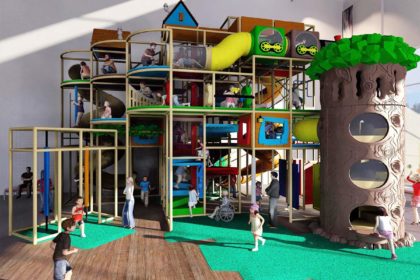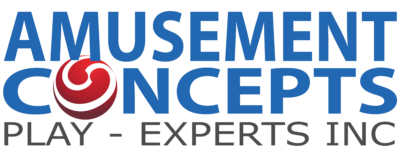
When designed with the end-user in mind, indoor playgrounds are a great added-value activity that will drive a strong return on your investment. Offering a diverse, well designed indoor play structure like this one by Soft Play will have your customers coming back for more.
Pricing is a unique process with regards to soft contained indoor playgrounds. Did you know that that majority of the design work playground equipment manufacturers do for fun centers and children’s entertainment centers are custom designs? Since your business goals can differ from say the quick service restaurant or other indoor play place down the road, so too should your playground design. That’s why customization is key and encouraging this process should be a given by any equipment supplier.
PRICING TACTICS
On Sale Now
You know that jaded feeling you get when you’re shopping and see those sales promising “up to 50% off” or “final sale” and the like? How about when you return in a month and the huge discount offers are still there? In the playground biz, this translates to offers of “Manufacturer’s Savings passed on to you”, “Factory Direct Pricing”, “Playground Sale” and other types of marketing noise.
Why doesn’t a “sale” make sense? The basic “ingredients” of all indoor playgrounds, metal pipe, clamps, hardware, foam post covers and nylon net are relatively similar among most North American manufacturers and form the base for all structures. While there are different qualities of netting and vinyls, their price will vary but not dramatically, so a giant sale should make you suspicious, which leads to the next tactic…
Lowest price every day
You get what you pay for, a universal truth as much for indoor playgrounds as it is for, say, a Swiss “looking” watch. However, that watch isn’t responsible for the success of your indoor party business and even more importantly, for the safety of your community’s children. It’s one thing if the watch stops working in 3 months, but quite another if the “fail” happens when there are 40 kids racing across a playspace 16’ up in the air.
Promising industry low pricing goes hand in hand with cutting corners. Why, you ask? Back to the basic playground “ingredients”. If these are too cheap, a corner has been cut. If not here, then the next cut comes from technical design. Or in the final step, construction/installation. Choosing the necessary quality for these basic “ingredients” will, and should, cost a little more than those of the copy-cat or sub-par manufacturer down the road, or from overseas.
PLAYGROUND EQUIPMENT PRICING – THE MOST COMMON MISCONCEPTIONS…
Bigger always costs more – not true for shoes, or indoor playgrounds
A larger structure with less activity can cost the same or less than a smaller one with more attractions
Bigger is better – once again, think shoe shopping
Actually, it’s fit. There are no right or wrong sizes for a playground, but it does have to fit the market. Too big and you’ve overspent on equipment and rent. Too small and you’re inviting competition and not maximizing profit.
Size equals capacity – half a glass of water takes the same space on the table as a full one
The type of play elements determine capacity as much as the space the park occupies. In a 4’ X 4’ X 4’ cubic space you can fit 1 Tube Crawl, which fits 1 kid at a time with limited activity, moving in just 1 direction. Or you could fit a 4’ X 4’ platform with an activity on it, fitting 2-3 kids in a passing lane with multi-directional play.
Every company makes play components the same way – right, that’s why a Rolls Royce sedan costs the same as a Ford Escort
The playground drawing doesn’t reflect the equipment engineering. For each activity, what are the materials used, how has it been field tested, can you see product photos not just illustrations, how is it installed, is it easy to maintain or replace, how many have been installed to date?
THE 2 MOST CRITICAL FACTORS OF THE PRICE FORMULA…
Play Capacity
To be successful and profitable in your market, how many kids does your park need to fit at its busiest? Here’s a simple formula you can use…
- Average number of kids under 12 in your market = Total population X 15%
- Average number of visits/ year = 3.2
- Average spending/ visit = $12/kid
Example…
Let’s say the population is 150,000.
150,000 X 15% = 22,500 kids 2-12 years
Say 50% of them visit your business.
(22,500 kids) X (50%) X (3.2 visits) = 36,000 visits per year
36,000 visits/ 52 weeks = 692/ week
692 X 60% on weekends = 415 visits on weekend
415/ 2 days = 208 visits/ day
208 visit/ 4 hrs (because parks are busiest from 12:00-4:00 on Saturdays) = 52 kids
Recommended park capacity = 52 kids minimum!
Play Value
Even more important is play value = how much fun it is for your guests = how often those guests will want to return. This is driven by the type and quantity of real activities within the playground.
The more activities you have the more “playable” and the more fun your playground will be. Ultimately this “playability”, not only within your soft contained indoor playground, but in your entire centre’s activity mix, drives a high repeat desire for children to return and play again and again.
Is the cost of play value the same for every activity? No. Fabrication methods, material used and install time all affect the play component cost. A set of well crafted , durable and secure punching bags will cost more than a single horizontal roller, but the bags occupy more space and more kids at once. Moving activities like spinning seats or built in pogo sticks are guaranteed hits, but the high level of engineering for their safety and long life have a price. Compare these with simple, cost effective hand-over-hand monkey bars, and you begin to develop a sense of the best flow, and dollar value, for your playground’s playability.
Some say you can allocate a dollar value per child capacity, but we disagree. Since there is such a wide price range for individual play elements, there is no relevant price/kid that will reflect the reality of your design. Imagine trying to give a dollar value per passenger based on the capacity of your sedan, coupe or minivan, without knowing the make or model!
A SHORT WORD ON THEMING
Recall the story of 2 men walking through the woods, who come across a bear that begins to follow them. As they walk faster, so does the bear. They jog, bear too. They begin to run but soon the bear is gaining on them. Suddenly, one of the men stops, kneels down, reaches into his bag and pulls our his running shoes. The other cries “Why are you stopping, the bear is catching up!”. As he calmly ties his laces, the first man replies “I realized I don’t have to outrun the bear, I just have to outrun you.”
Theming is a very effective tool for differentiating your facility from the competition. It is also available on a sliding cost scale, from simple themed banners and 2D cut outs , all the way to high end 3D sculptures, lighting and sound effects. The rule of thumb is that theming can be worthwhile but only if you really need it to compete. If you are the only show in town, you can avoid theming or maybe introduce it later to get the most bang for your buck.

